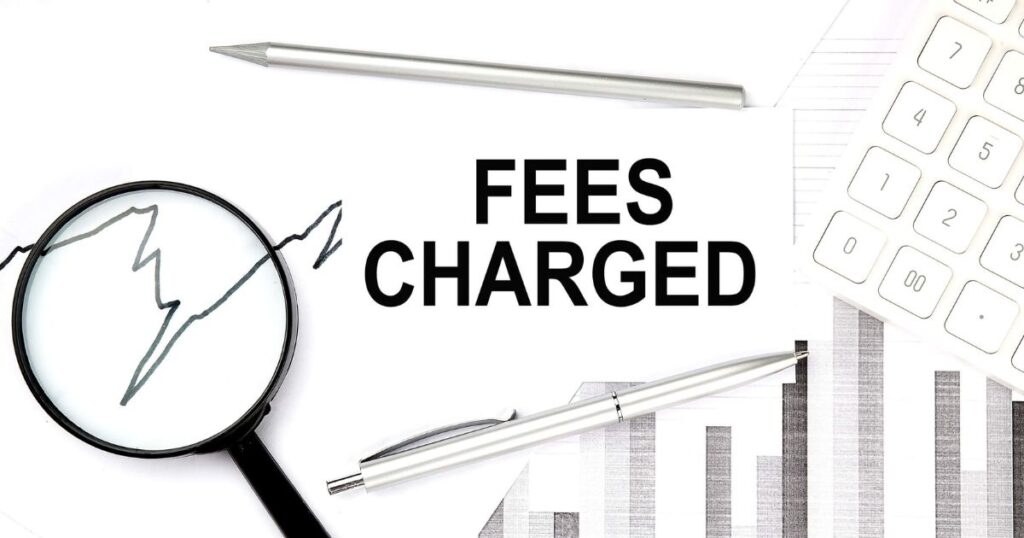The AGI TMO Service Fee is a charge applied by financial institutions for specific banking services. It often appears on credit card or bank statements, representing costs for transactions like international purchases or money orders. This fee is a legitimate charge, though it can sometimes catch customers off guard.
Have you ever found a mysterious charge in your statement and felt your heart skip a beat? You’re not alone. Many people encounter AGI TMO service fees without fully understanding them. But don’t worry, we’re here to demystify these charges and put your mind at ease.
This clear and simple overview will explain everything you need to know about AGI TMO service fees. We’ve covered you, from their origins to why you might see them in your statement. By the end, you’ll be equipped to manage your finances more effectively and avoid unnecessary charges.
Introduction To AGI TMO Service Fee Charge
Ever glanced at your bank statement and spotted a mysterious AGI TMO service fee charge? You’re not alone. These pesky fees often leave folks scratching their heads, wondering what they’re all about. But don’t fret! We’re here to demystify this financial riddle for you.
Understanding AGI TMO service fees is crucial for anyone who wants to grip their finances tightly. After all, knowledge is power, especially regarding your hard-earned cash. So, let’s dive in and unravel this banking mystery together!
Origins Of AGI TMO Service Charges
The story of AGI TMO service charges is as old as modern banking itself. These fees emerged as financial institutions sought ways to cover operational costs while providing various services to customers. It’s like paying extra for the convenience of having a bank manage your money.
Common Scenarios For AGI TMO Fees On Credit Cards
You might bump into AGI TMO fees in several situations. For instance, when you use your credit card abroad or transfer your balance. It’s like a little toll you pay for special banking services. Keep an eye out, and you’ll start noticing patterns when these charges pop up.
Is AGI TMO Service Fee Charge Legit?

Yes, AGI TMO service fee charges are indeed legit. They’re not some sneaky scheme cooked up by your bank. These charges are regulated by consumer protection laws, ensuring they’re above board. However, that doesn’t mean you should just accept them without question.
Verifying any unfamiliar charges on your bank statement is always a good idea. If something looks fishy, don’t hesitate to contact your bank or credit card company. They’re there to help, after all!
What is the AGI TMO Service Fee Charge?
Let’s break it down. AGI stands for “Adjusted Gross Income” in the financial context, but it often refers to a service provider or financial institution in banking. TMO typically means “Transaction Money Order” or similar transaction-related services.
So, an AGI TMO service fee is essentially a charge for a specific banking service. It’s different from other fees like monthly account maintenance charges. Think of it as a specialized fee for a specialized service.
Reasons for the AGI TMO Service Fee Charge
Banks and financial institutions don’t just slap on these fees for fun. They’re usually tied to specific services that cost the bank money. For example, processing international transactions or issuing money orders can incur costs for the bank.
From a business perspective, these fees help cover operational expenses. For consumers, it means paying extra for certain services. It’s a balancing act between providing services and keeping the lights on at the bank.
How to Fix AGI TMO Service Fee Charge On Credit Card or Bank Statement?
Spotted an AGI TMO charge you don’t recognize? Don’t panic! Here’s a simple step-by-step guide to tackle it:
- Review your recent transactions
- Identify the specific AGI TMO service fee
- Contact your bank or credit card company
- Explain the situation calmly and clearly
- Ask for details about the charge
- If it’s an error, request a reversal
How Many Types of AGI TMO Service Fee Charge?
There isn’t just one type of AGI TMO service fee. These charges can vary depending on the service provider and the service rendered. Here’s a quick rundown of common types:
- International transaction fees
- Balance transfer fees
- Cash advance fees
- Money order fees
- Wire transfer fees
Each type serves a different purpose and may be calculated differently. It’s like a menu of banking services, each with its price tag.
Here’s a table to illustrate typical fee ranges for different types of AGI TMO service charges:
| Fee Type | Typical Range |
| International Transaction | 1% – 3% of transaction amount |
| Balance Transfer | 3% – 5% of transferred amount |
| Cash Advance | 3% – 5% of advanced amount + flat fee |
| Money Order | $0.50 – $5 per order |
| Wire Transfer | $15 – $50 per transfer |
Why am I being charged the AGI TMO Service Fee?
You might be seeing AGI TMO service fees for various reasons. Perhaps you’ve been using services that incur these charges without realizing it. Common triggers include:
- Making international purchases
- Transferring balances between accounts
- Requesting money orders
- Using out-of-network ATMs
Case Study: The Traveler’s Surprise
Let’s consider Sarah, a frequent traveler. On her recent trip to Europe, she used her credit card for most purchases, thinking it was the safest option. When she returned home, she was shocked to see multiple AGI TMO service fee charges on her statement.
After talking to her bank, Sarah learned these were international transaction fees. Each purchase she made abroad incurred a small fee. While each fee was small, they added up over her two-week trip.
The lesson? Always check your card’s international fees before traveling. Some cards offer no foreign transaction fees, which could have saved Sarah a bundle!
Tips to Minimize AGI TMO Service Fees

Now that you understand these fees better, here are some tips to keep them in check:
- Choose the right card: Some credit cards offer lower or no fees for certain services.
- Plan: If you know you’ll need services that incur fees, look for alternatives or budget for them.
- Use in-network ATMs: This can help avoid cash advance fees.
- Bundle services: Some banks offer fee waivers if you use multiple services.
- Ask about fee waivers: Sometimes, simply asking can waive a fee, especially for loyal customers.
You May Also Read: Tech Etruesports: Shaping the Future of Competitive Gaming
Conclusion
Understanding AGI TMO service fees is crucial to managing your finances effectively. While these charges are legitimate, it’s always wise to closely monitor your bank statements and question any unfamiliar fees.
Remember, knowledge is your best defense against unexpected charges. By staying informed and proactive, you can minimize unnecessary fees and make the most of your banking services. Here’s to smarter banking and fatter wallets!
As the financial landscape evolves, so will the nature of banking fees. Stay informed, ask questions, and don’t be afraid to shop for the best banking services that fit your needs. After all, it’s your money – make sure it’s working as hard for you as you do for it!
FAQs
What’s the AGI TMO service fee?
An AGI TMO service fee is a charge applied by banks for specific transactions or services, such as international purchases or money orders. It’s a legitimate fee that appears on your bank or credit card statement.
Why did I get charged a service fee?
You might be charged a service fee for specific banking services, such as wire transfers, balance inquiries, or out-of-network ATM withdrawals. These fees help cover the bank’s operational costs for providing these services.
Why did I get charged an international service fee?
An international service fee is typically charged when you purchase abroad or in foreign currencies. It covers the bank’s costs for processing transactions across different monetary systems and exchange rates.
What is the fee for service transactions?
A fee-for-service transaction is when you pay a specific amount for a particular banking service. This could include things like ordering checks, requesting a wire transfer, or getting a cashier’s check.

As a seasoned website Content Writer with three years of experience, I specialize in delivering engaging and informative content on a variety of general topics. Explore my work at “https://timesrenewal.com/“.






